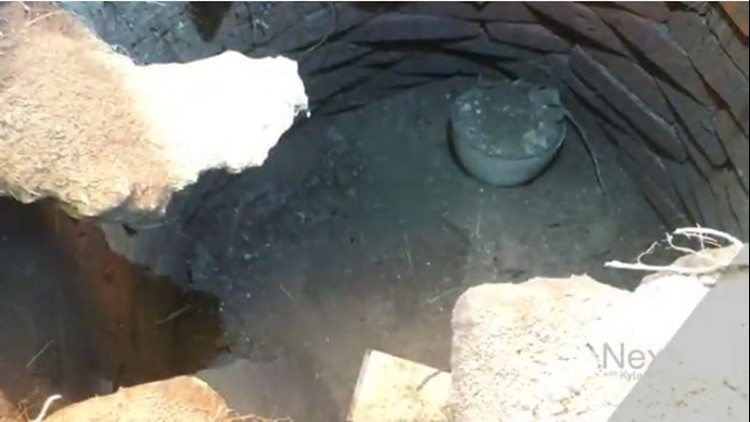DENVER – This story starts like so many others do in Denver these days. A cute, century-old home is about to be demolished in an up-and-coming neighborhood.
“They’re planning on scraping it and putting up a three-story modern farmhouse,” said Molly Kreck, the neighbor from two doors down, as she stands along the sidewalk of a home she’s always adored. “I thought if I could just save a little bit of that it would be a way I could help.”
She asked the tenant living in the home near Wash Park if there was anything she could salvage before the bulldozers rolled onto the lot. Then she realized there was something she really treasured.
“One of the things that was here that the whole neighborhood enjoyed was a massive Russian Sage bush,” Kreck said.
She decided to take it.
But it proved more difficult than she thought.
“I started with a shovel and after about an hour I realized that wasn’t going to happen,” she recalls. “So, I ended up using a tow chain and my Honda CRV and I pulled it out with my car.”
Then, she realized, she’d need to put it somewhere.
“The first thing that goes through my mind is – now that I’ve done all of this work, I’m going to kill it,” she said. “I’m going to kill it by not having a spot and getting it into the ground.”
She moved to her backyard, found a sunny spot and started digging.
“I probably got a foot down and the earth just gave way and the shovel just completely disappeared into the ground,” she said. “At this point, I just sort of stood here for a minute… and thought… what might this possibly be.”
Then, she reached into the hole to see what she could feel. To her surprise, she felt bricks.
“It seems like the bottom layer is a bunch of pieces of rock,” she said. “Maybe charcoal…I did also try to burn it and it didn’t burn.”
The pit is about five feet deep with brick around the outside. That brick is not connected with mortar.
“I’m guessing with the distance to the house it’s some sort of well,” Kreck said.
And her employer, Gov. John Hickenlooper, backed up her theory.
“Because I work for the governor, I decided as a geologist he might know and I brought him a couple of those rocks and some photos of the pit and he determined it could be used for water filtration,” she said.
Next sent pictures of the pit to several sources in town Thursday. Here are their responses, which all differ slightly. We should note that all sources said they couldn’t definitively determine what the pit was without seeing it in person.
City of Denver Historic Preservation Department:
“Our preservation supervisor said she thinks it’s probably an old privy (outhouse), which were often brick-lined.”
Western History Collection at Denver Public Library:
“I took at look at a 1905 real estate map and there is nothing at all shown on the property. That area isn't covered on the 1904 Sanborn Atlas (which is updated to 1925), so I went to the 1929 atlas, which only showed the buildings.
This does look like part of an old well or cistern. It was close to Cherry Creek, a water station and a small irrigation lake, so it could be related, but I can't say for certain, as the maps I found didn't include irrigation ditches on them.”
Discover Denver:
“This is likely a cistern or a well. What a cool find!!”
History Colorado:
"Of course, not being on site, we can't make any definitive answers, but due to the location and conditions, it is likely 50-70 years old, built in the style of a domestic well. However, it doesn't appear that functional, as it seems to be missing lining and doesn't have many signs of use. It's even possible this was even merely a decorative structure."
Hickenlooper (Next followed up with him in an interview, and he, the former geologist, is entranced):
"To be honest, I think it’s still a mystery unless there was some you know near-surface groundwater. It’s hard to see how it would have been a source of water, yet there’s no fire marks and there’s no smell or stains that would indicate it was used as a receptacle for human waste."
Do you know what the pit is? E-mail next@9news.com.



